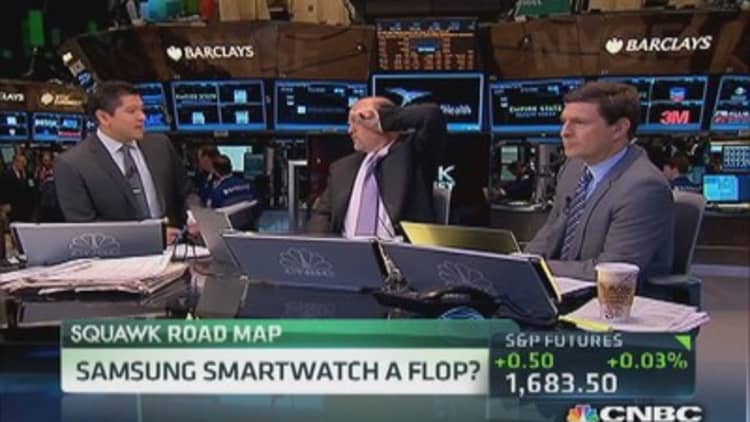Tech giants are betting big on wearables as the next big wave in consumer tech, but the wearable market may be harder to conquer than the companies expect.
(Read more: Smartwatch wars: The top contenders )
Unlike the mobile device market—where several smartphones and tablets reign supreme—consumers will demand more choice when it comes to wearables, said Hosain Rahman, founder and CEO of Jawbone, at the Fast Company Innovation by Design conference on Wednesday.
"I don't think there is one size that fits all just the way there is in the tablet market and the phone market," Rahman said.

"Everyone wearing the same watch is uncool in a way that it wasn't uncool when we all had same iPhone. It's something that is hard to pull apart and understand, but at a consumer behavior level it's the nature of that kind of thing."
(Read more: Apple snags Nike Fuel Band designer )
In other words, when it comes to actually wearing a device, consumers will be pickier and won't flock to an Apple iWatch or any other one wearable device the same way they did the iPhone. They'll want more than one option, he said.
(Read more: Look out Samsung! Is this the next big smartwatch?)
"Fashion is already getting to a place of functional. Functional jewelry, functional fashion, functional accessories, there will be a wide range of offerings and a wide range of materials," said Yves Béhar, Jawbone's chief creative officer, at the conference. "So the idea that there will be only a singular product, like a singular phone or iPod that people will use, I don't see that happening in that particular space."
(Read more: Cramer: 'The curtain has closed' on Samsung's smartwatch )
According to ABI Research, the wearable computing market is projected to hit $6 billion within five years and there's certainly no shortage of companies looking to cash in.
Whether it's Google with its Google Glass, Samsung and its Galaxy Gear smartwatch or any number of start-ups getting into the space, there's a big push to bring more wearables to the masses.
And a big reason there has been so much growth in the space is simply because it's now so much cheaper to make these devices.
(Read more: Samsung may already be working on next version of smartwatch)
"What's happened is your cost of computing power has come way down, the cost of connectivity has come way down, sensor cost has come way down and can now be integrated in tiny, tiny packages," Rahman said.
But designing those tiny packages is still very challenging because consumers have a higher expectation of something they wear as opposed to a device they carry or keep in their home, Béhar said.
"Designing wearables, from a design standpoint, from a technical standpoint, it's the hardest thing I've ever worked on," Béhar said. "The expectation from the consumer for the product on how it fits, its ergonomics, its durability, how it looks, how it expresses their current state of fashion is so much higher than with a product you place on the table."
(Read more: Why Apple is still the king of design and innovation)
—By CNBC's Cadie Thompson. Follow her on Twitter @CadieThompson.


